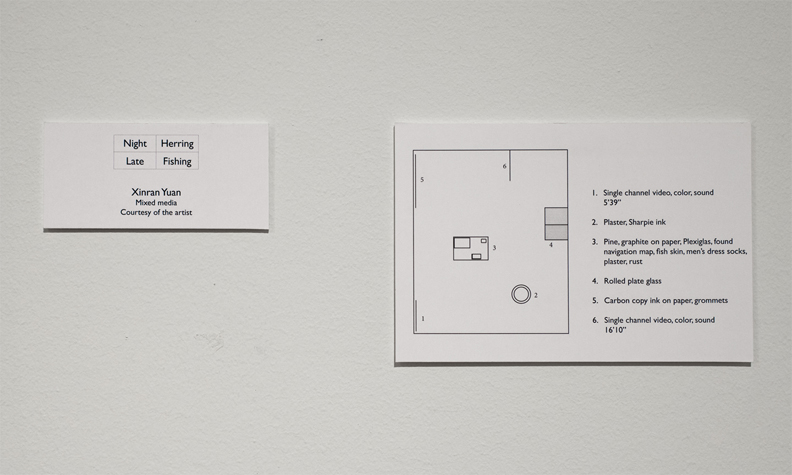The 1950s and 60s saw one of the biggest happenings in the global fishing industry: the crash of all the major Northern Atlantic herring stocks. From the time when the industry first noticed the drastic decline in catches, to when scientists formed joint research groups to conduct tagging experiments, and to when governments responded to the scientific reports, there was a 10-year delay in action, which eventually led to a complete fishing ban in 1977.
To some people, the story of herring hardly contains any mystery in retrospect: the narratives are summarized into a single term “overfishing.” To others, especially those whose everyday life was impacted, the account of "the herring era" remains latent, unconcluded. In this case, to recount the story is to negotiate with oneself: a lifestyle one was attached to, a specific set of skills and knowledge, an identity.
This group of work anchors on a series questions about seeing, or about our (in)ability to see: from "what does herring look like when it's in the ocean?" to "how do we see the scope of a shared ecological system?"
For my MFA thesis project, I traveled to Iceland on multiple occasions, and interviewed marine scientist Mr. Jakob Jakobsson, who led the tagging experiments in Iceland and drafted the majority of scientific reports in the 1960s.
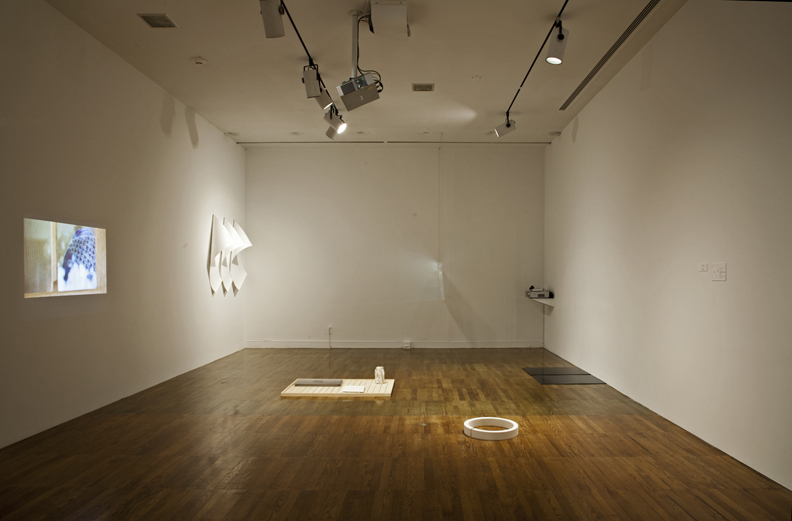
installation view, Krannert Art Museum, May 2014
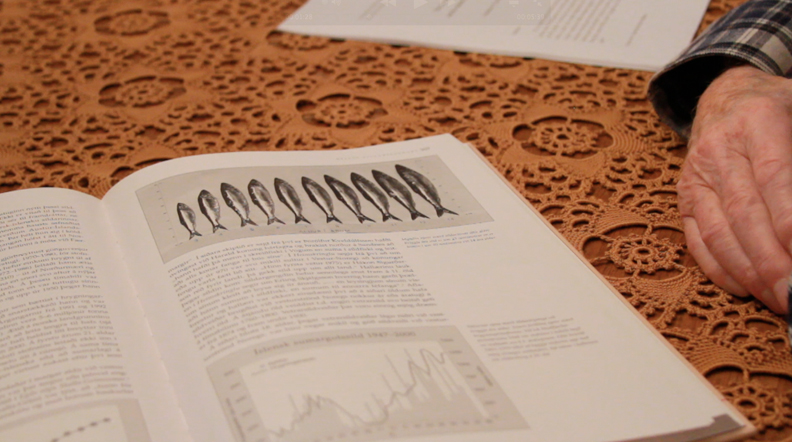
Video still "Jakobsson Describes Herring"

Plaster; Sharpie ink
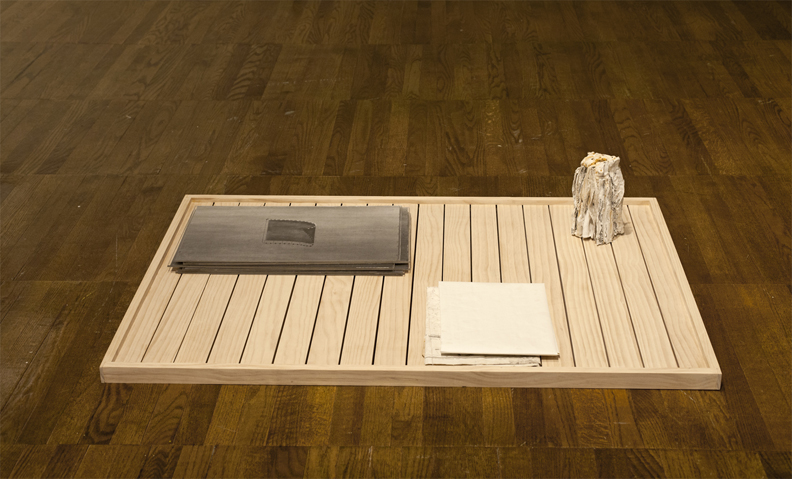
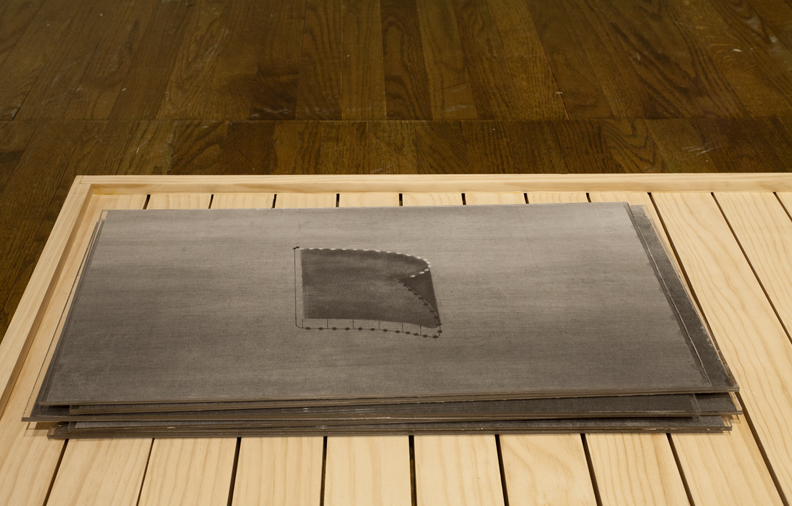
graphite on paper, Plexiglas (Seven Steps of Seining)
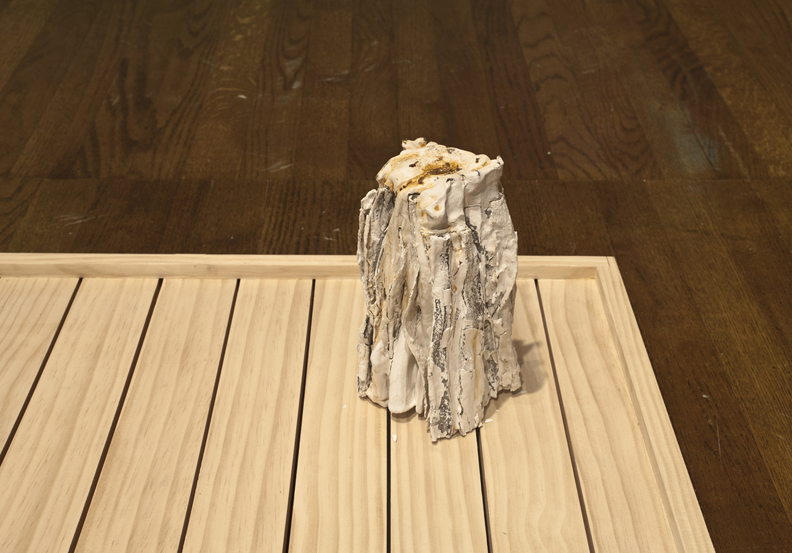
fish skin, men's dress socks, plaster, rust
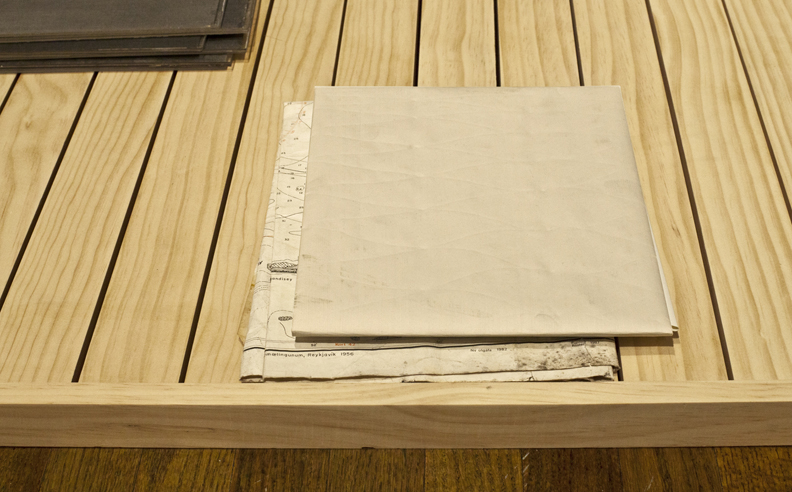
graphite on paper, found navigation map
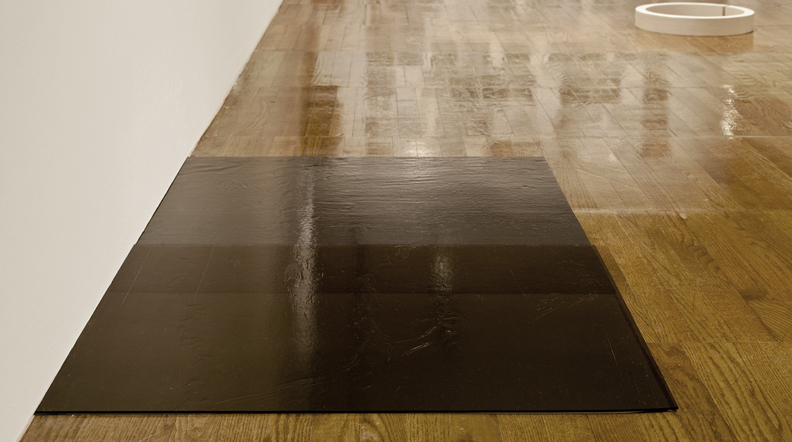
rolled plate glass
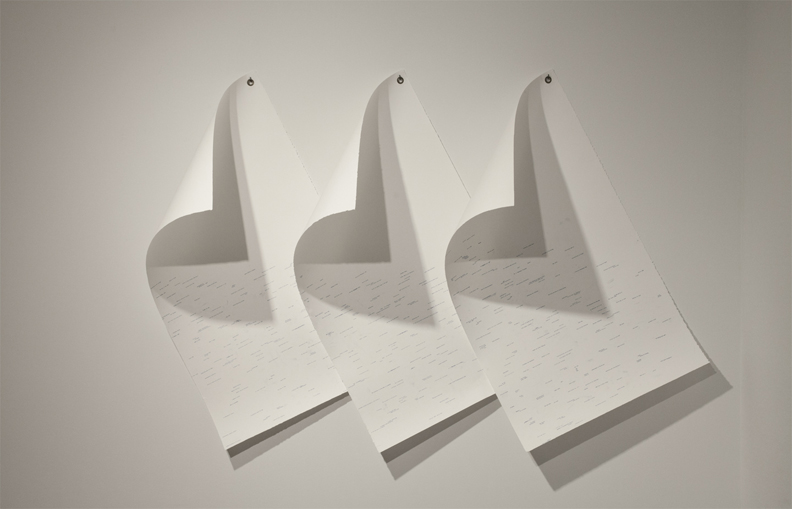
carbon copy ink on paper, grommets. 10 years of science research report
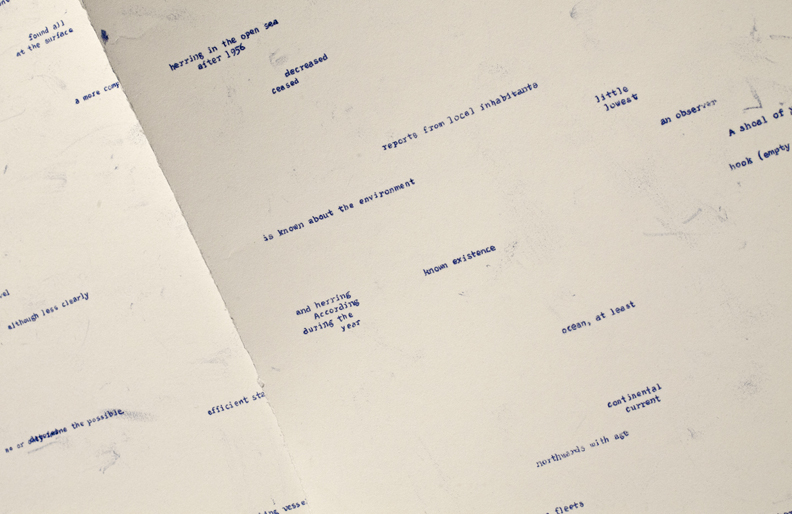
detail view
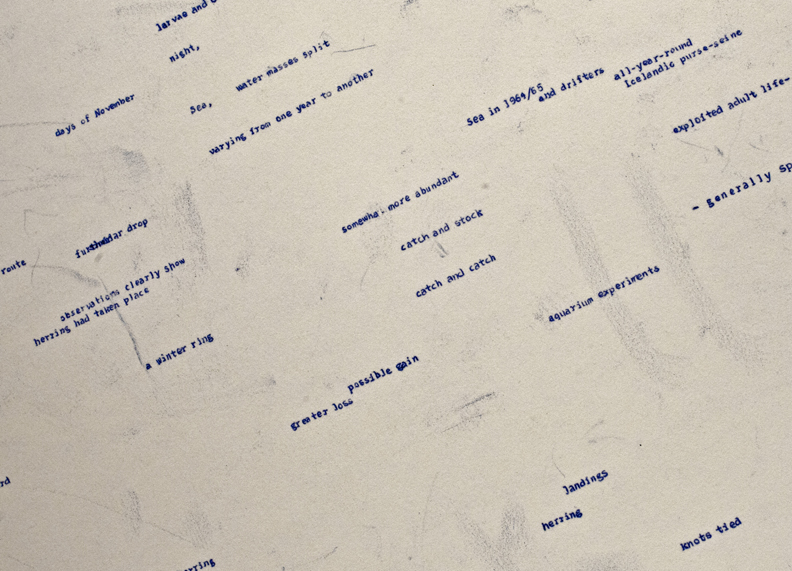
detail view
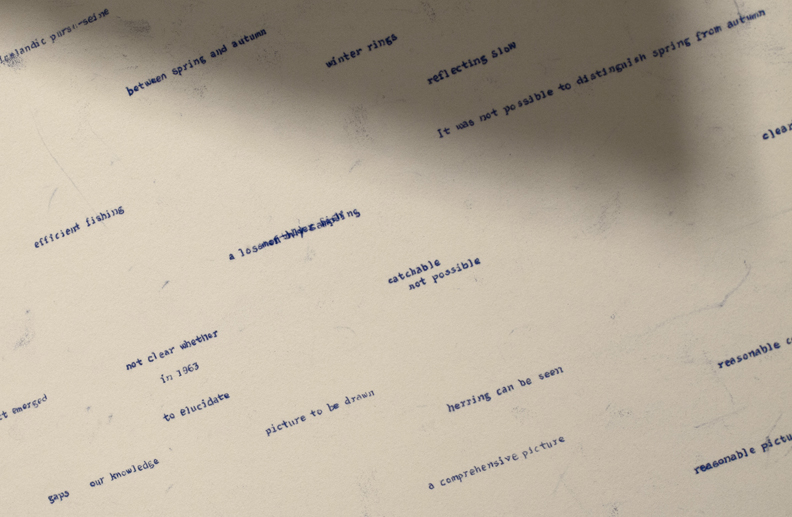
detail view
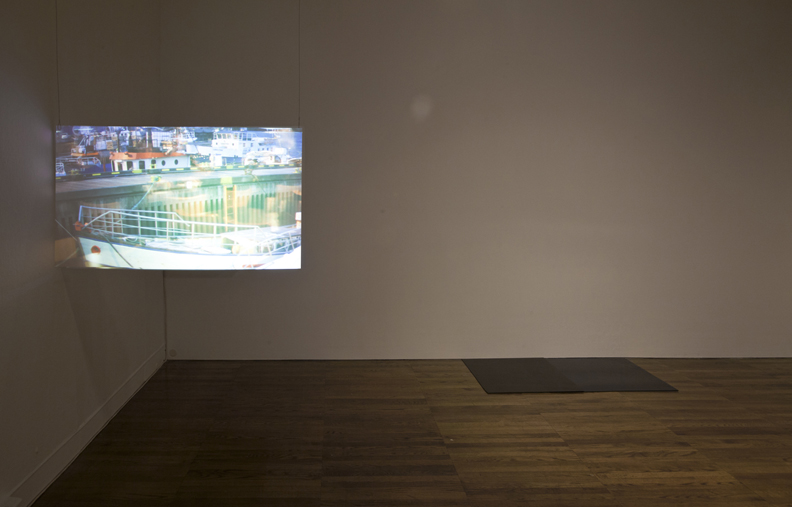
single channel video, color, sound 16'10
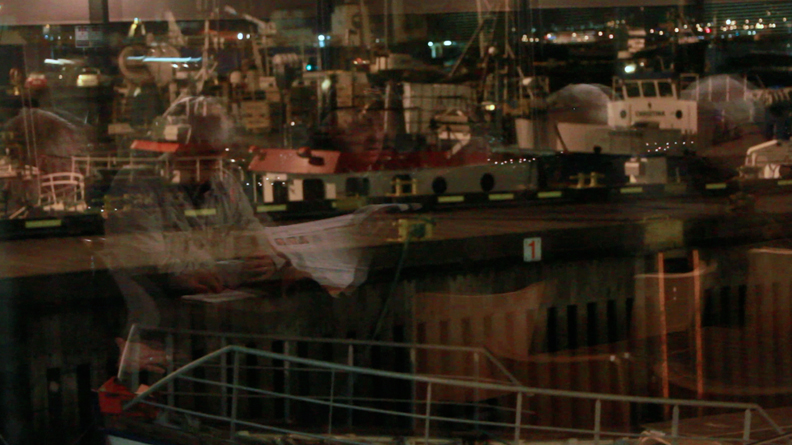
video still
